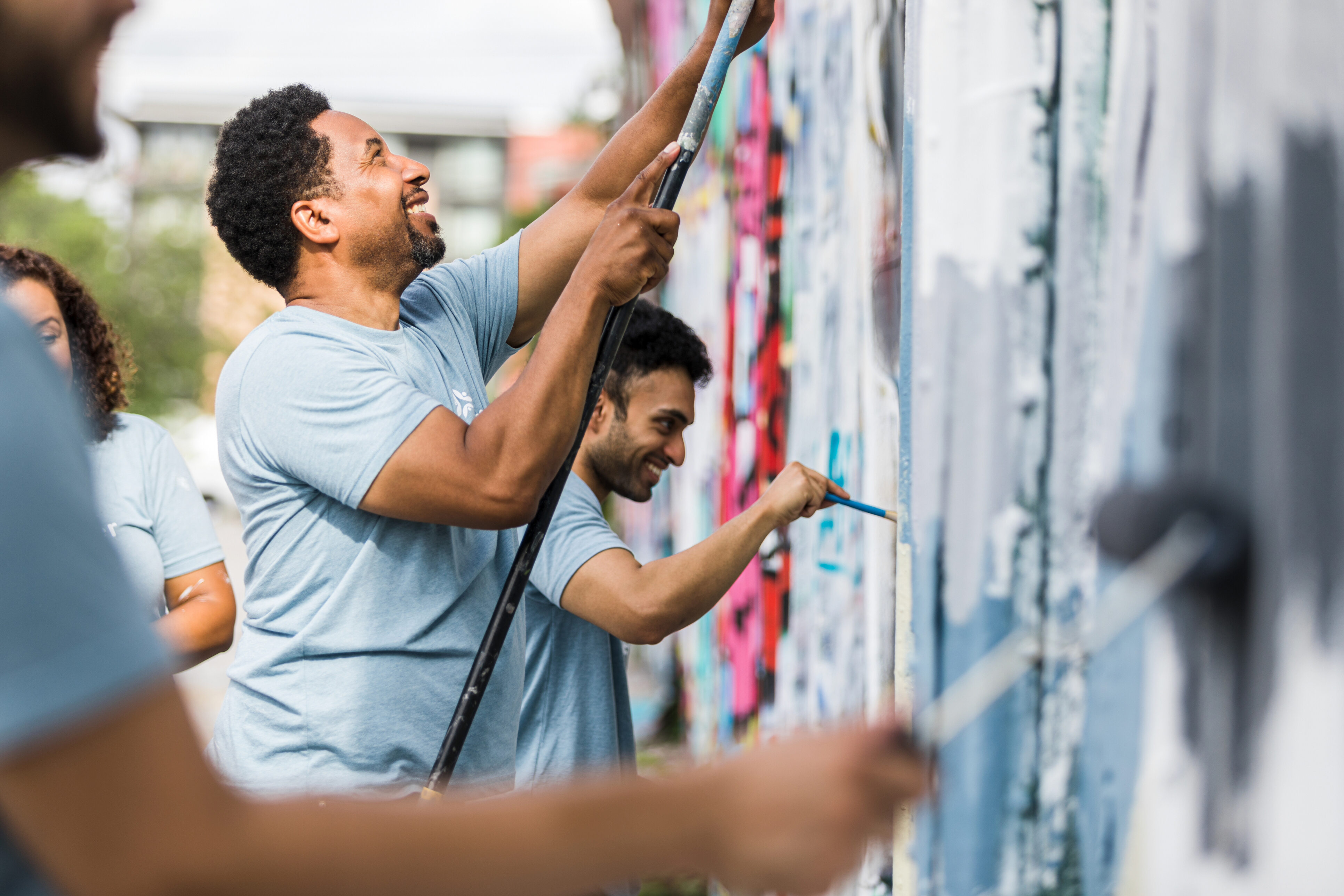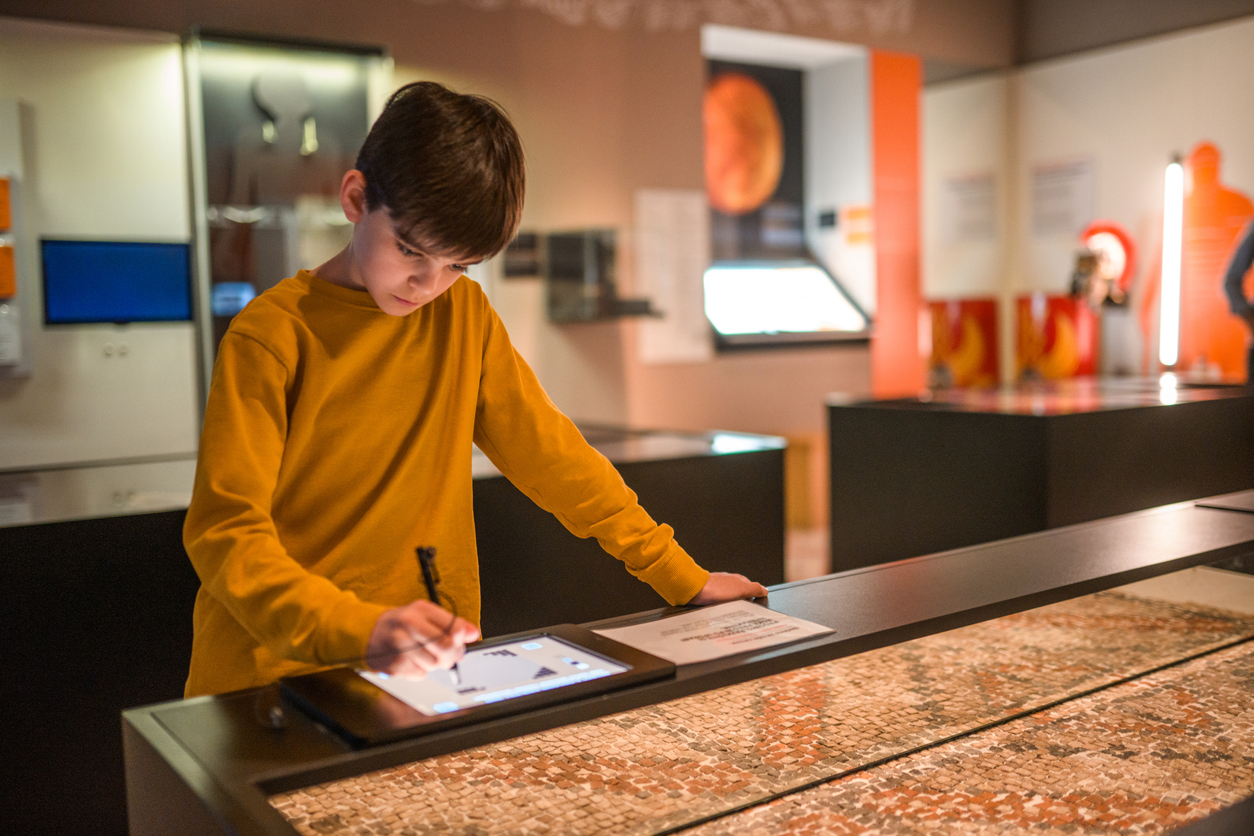What Is Social Justice Art?
Written by: Wilson College • Apr 10, 2024

What Is Social Justice Art?
Using art to raise awareness of a social issue is an effective way to create change. Through visual, interactive, and performance mediums, artists illuminate important cultural and societal concerns. Social justice art can spur people to take action, make people see issues in a different light, and connect people across the world.
To learn more, check out the infographic below, created by Wilson College Online’s Bachelor of Arts in Liberal Studies .

Social Justice Art: Definition and History
Social justice art can focus on public policy, racial inequity, injustice, human rights, or any other issue that an artist feels demands attention. Stories have always been powerful tools for oppressed people, and art is another medium for stories. Art can spark conversations, bring issues into the public eye, and criticize powerful people and organizations. It can also bring people together, celebrate victories, and tell important stories.
Art With a Purpose
Social justice artworks strive to spread their message to as many people as possible. Art can be used to advance messages on topics such as opposition to war, civil rights, LGBTQIA+ acceptance, and women’s issues. Artists may create art that shares a message or the work of art itself may be the message.
Art in the Streets
Graffiti, murals, and performance art are a large part of the social justice movement. Groups like the Black Panther Party and the Chicano Movement created art in public spaces to memorialize lost lives, show support for their community, and spread their message. Placing art in the public eye brings unspoken issues to light and can motivate people to demand reform.
Political Art
Social justice artists seek to make big, attention-grabbing political statements. Tackling issues like climate change, women’s rights, and immigration brings art into the political arena. By making art about political issues, artists can influence public policy.
Social Justice Art in Action
Social justice art uses music, fine art, dance, photography, and sculpture to address important social issues.
Racism
The following artists and artworks address issues of racism.
Diego Rivera
Diego Rivera was born in 1886. In 1928, he completed a series of frescoes titled “Ballad of the Proletarian Revolution.” It was more than 5,200 square feet and displayed his communist views. Later, he traveled to North America to create more murals that commented on migrant workers, racial issues, and Mexican social issues. He believed that art should not be elitist and should be created by ordinary people. He helped inspire President Franklin D. Roosevelt’s Works Progress Administration, which employed tens of thousands of artists.
Kara Walker
Kara Walker was born in 1969. Her art depicts specific acts, such as bestiality, cannibalism, and castration, to mirror the real-world suffering of bodies and psyches. She uses silhouette art, painting, and sculpture to portray gory images. Her work has been displayed in the Tate Modern, New York’s Museum of Modern Art (MoMA), music videos, and public spaces. She grew up in rural Georgia and aims to bring the covert racism she experienced as a child, and later as an adult, into the public consciousness.
George Floyd Murals
On May 25, 2020, George Floyd was murdered by a police officer in Minneapolis, Minnesota. Since then, more than 2,700 pieces of street art have been created globally to memorialize him and what his death has come to symbolize. Following Floyd’s death, protests occurred around the United States, with protestors demanding racial justice and police reforms. Activists in many other nations also see the death of George Floyd as a symbolic event that can inspire people to demand change.
Government Criticism
Some works of art are used to criticize governments and their actions.
Guo Jian
Guo Jian was born in 1962. He served in the People’s Liberation Army in the 1980s. After leaving the army, he studied art and began criticizing the Chinese government’s use of propaganda. For the 25th anniversary of the Tiananmen Square demonstrations, he created a diorama of the square and covered it in raw, pink meat. This led to him being exiled from China for five years. He now lives in Australia and continues to make art that calls for nonviolence.
“Invisible Homeless”
Created by Luke Jerram in 2015, “Invisible Homeless” is a glass sculpture of a sleeping homeless person covered with a blanket. Jerram placed it in the streets of London to bring attention to the thousands of homeless and invisible homeless people living in the U.K. “Invisible Homeless” represents those who sleep in hostels, squats, and other forms of insecure accommodation. It is meant to raise awareness of and drive support to people without secure housing.
“Napalm Girl”
Taken on June 8, 1972, by Nick Ut, the photograph known as “Napalm Girl” depicts Phan Thi Kim Phuc, a 9-year-old Vietnamese girl, running in terror from a napalm attack. Ut, a Vietnamese photographer, took the photograph before driving the injured children to the hospital. The photograph was widely distributed by both television news stations and newspapers, spurring criticism of the Vietnam War. It became a famous anti-war image, and Phuc established the Kim Foundation International, which continues to provide aid to children of war.
Women’s and LGBTQIA+ Rights
Social justice art can be a powerful tool for addressing the rights of women and LGBTQIA+ people.
Guerilla Girls
Formed as a group in the 1980s, the Guerilla Girls are anonymous activists who create pop art that uses headlines and statistics to expose bias and corruption in art. They also criticize the lack of women and LGBTQIA+ artists in major art galleries and museums. While maintaining their reputation as radical activists, they have had their work exhibited in prestigious museums, such as MoMA in New York.
Keith Haring
Keith Haring was born in 1958. He became a celebrated artist, designed watches for Swatch, and created murals worldwide. He produced over 50 public artworks, many of which focused on his battle with AIDS. His goal was to give art to the people and show the public that those who died of AIDS could live on forever through art.
AIDS Memorial Quilt
The AIDS Memorial Quilt is the largest community arts project in history. Created by Cleve Jones, the original quilt had panels for the more than 1,000 San Francisicans who died of AIDS. On October 11, 1987, the quilt was displayed on the National Mall in Washington for the National March on Washington for Lesbian and Gay Rights. It is still being added to today.
Continuing the Fight
Social justice art is a powerful tool for spreading messages, changing minds, and influencing politics. Throughout history, artists have protested war, called for change, and brought communities together. Whether it is created by professionals or amateurs, art can be an effective catalyst for social justice reform.
Sources
Australian Financial Review, “Amnesia and Nightmares as China Prepares to ‘Forget’ Tiananmen”
CNN, “‘Napalm Girl’ at 50: The Story of the Vietnam War’s Defining Photo”
Diego Rivera, “Diego Rivera, His Life and Art”
The Guardian, “Guo Jian on His Tiananmen Square Stand: ‘I’m So Proud of What I Did’”
Guerilla Girls, Guerilla Girls: Reinventing the “F” Word: Feminism
The Keith Haring Foundation, Transitions
Learning for Justice, “The Power of Place: Art as a Tool for Social Justice”
Level, “How Art and Politics Influence and Shape Each Other”
Luke Jerram, Invisible Homeless
National Aids Memorial, “The History of the Quilt”
National Gallery of Art, Artworks to Discuss Social Justice Issues With Students
National Museum of Women in the Arts, Guerilla Girls
PBS, “Diego Rivera: Rivera In America”
Time, “What the Artists Behind George Floyd Murals Around the World Want Us to Remember”


